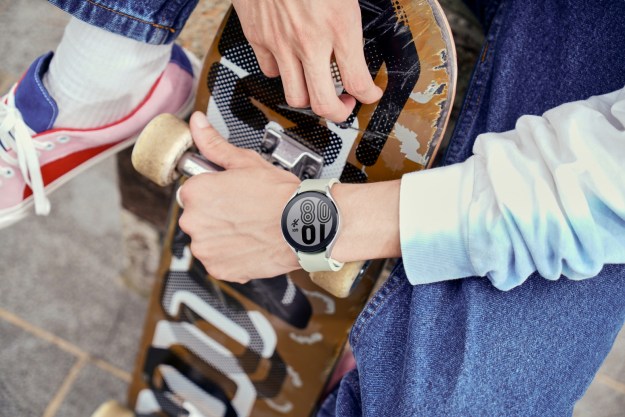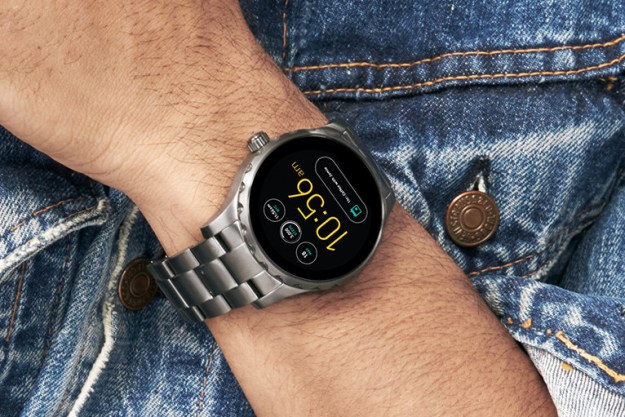Ever been to a historical place – say George Washington’s Mt. Vernon home – and wished you could see more than just a room full of old furniture?
ARtGlass, a pioneer of augmented reality storytelling software, has partnered with Epson to bring details of the past to life at iconic United States historical sites.
Already available at dozens of museums, palaces, and ruins throughout Europe, ARtGlass officially launched AR tours at James Monroe’s Highland historical home in Virginia in February, and will be implemented at Washington’s Mount Vernon historical home in Virginia by June. ARtGlass CEO and co-founder Greg Werkheiser hopes that by 2019, ARtGlass will be available at more than a dozen of the most iconic and visited cultural historic sites in North America.
“There’s a rising generation of people who expect more than a docent-led tour.”
“Each year there are 1.4 billion visits to U.S. cultural sites. That’s more than all the pro sporting events and theme parks combined,” Werkheiser told Digital Trends. “That being said, there are challenges to that market. There’s a rising generation of people who expect more than a docent-led tour. AR presents that content in a way that’s more digestible and engaging.”
AR applies layers of computer-generated information and images to enhance a real-world experience. Though detailed and interactive, the digital overlays are easily distinguished from reality while wearing the transparent Epson-powered smart-glasses used by ARtGlass. The glasses are lightweight, but not inconspicuous like Google Glass; they have thicker, 3D binocular lenses, and a 5-hour battery.
ARtGlass first launched in Italy, home to the greatest number of UNESCO World Heritage sites. At places like the Royal Villa of Monza, ARtGlass has had some success.

“People come in droves to the Royal Villa, which is a massive, largely-empty building that’s missing most of its original décor,” Werkheiser said. “With the AR glasses we were able to restore the rooms with their original furnishings, light the fireplaces, and pipe in music of that time period. We took a pleasant but sterile experience and gave it a story.”
Visitors enjoying ARtGlass tours roam through augmented environments while wearing virtual reality glasses that show 3D holograms, videos, pictures, artifacts, architecture, and landscapes — all hands-free.
The ARtGlass tour at Mount Vernon, for example, will be 50 minutes in length when it launches, with 13 stops throughout the vast estate grounds. It will serve as a virtual time machine, revealing lesser-known stories about Washington and the lives of Mount Vernon’s residents as well as the uses of the buildings and gardens over centuries.
The tour will open with visitors being welcomed to Mount Vernon by a 3D hologram of Washington himself.
The tour will open with visitors being welcomed to Mount Vernon by a 3D hologram of Washington himself (really an actor filmed against a green screen and brought to life in the smart glasses by ARtGlass software). Along the tour route, visitors will experience characters in full motion, 3D reconstructions of long lost buildings and landscapes, historic documents, 360 panoramas, and video. This will be accompanied by surround-audio with voices, music, and sounds from the landscape based on research.
Depending on the site, an ARtGlass tour could be built into the admission price or sold extra. At Mount Vernon, for example, the base admission is $20, and the site will charge an additional $12.50 for the AR tour. And while ARtGlass will certainly share in the profits, they partner with the sites by assuming the upfront installation costs.
“We certainly weren’t the first people to come up with the idea of bringing wearable AR to cultural historic sites, but we were the first to combine a substantive knowledge of the cultural space with the technological expertise to turn that idea into a reality,” said Werkheiser, who also co-founded Cultural Heritage Partners, a law, policy, and business strategy firm serving the cultural heritage sector globally.
For all the opportunities that AR can offer the cultural tourism industry, however, it raises difficult questions. As ARtGlass engages sites that represent — or include elements of — atrocities like slavery or genocide, people will want to know if those stories can be told via AR in a respectful, non-gimmicky way.
“Because the first mainstream exposure to AR was Pokémon GO, we’re frequently asked, ‘Are you just going to create cartoon characters? And will that interfere with academic storytelling or reverence for a site?’” Werkheiser said. “We believe — and have found through experience — that appreciation for the history and respect for a site can be enhanced through better storytelling. To us, it’s not a threat but an opportunity.”






